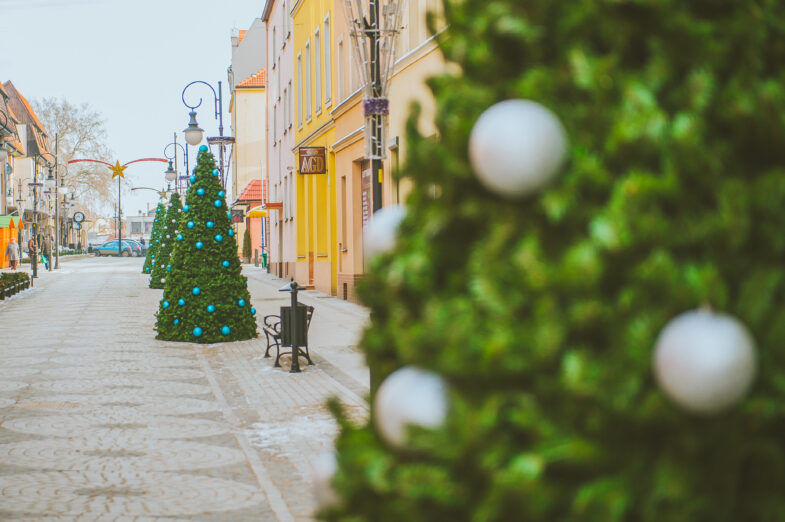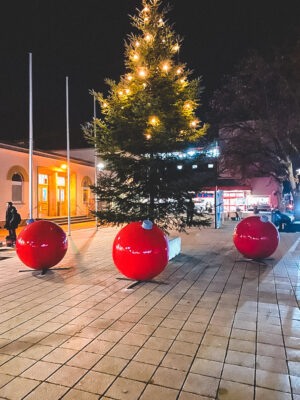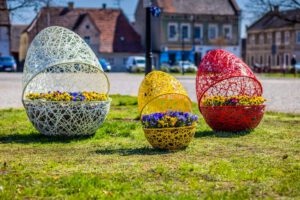Every year for several good years, there has been a debate about whether the Christmas tree placed in the city center is a beautiful decoration or an attack on people of other faiths. Interestingly, this dispute often seems to be inflated only in the media because when we talk about it with friends, it turns out that no one (even of a different faith) minds the sight of a glowing Christmas tree.
Let’s assume, however, that the people we talked to just happened to all have similar opinions, and in reality, it’s different. In that case, we should consider where the Christmas tree came from in the first place, but we’ve already discussed that topic—feel free to read the previous article if you’re interested in a historical journey back to the origins of the Christmas tree in our culture.
Next, we should think about what positive things the Christmas tree brings into our lives and what negative feelings it may evoke, and most importantly, where these negative and positive feelings come from. Often, we let emotions take over our hearts before understanding them. Today, we will try to approach the topic rationally, and we invite you to join the discussion!

Let’s start with the negative aspects because it is through them, or thanks to them, that the thought arises, which is, after all, a philosophical thought. If we can all avoid arguing, we can only grow through such conversations.

The most frequently mentioned reason for reluctance towards a Christmas tree in a public place is attention to the feelings of others, i.e., respect for all beliefs. Because the Christmas tree is associated with a Christian holiday, people wonder, or believe, that all such and other symbols (like crosses or Christmas trees) should not appear in public spaces because they may offend the feelings of people of different faiths or even non-believers.
Another reason is religious diversity. By creating such decorations in public spaces, some people of different faiths may feel discriminated against, overlooked, or even unnoticed due to the favoritism of one religion by city authorities. Therefore, many countries strive to maintain ideological neutrality in public institutions.
A strong and persistent argument is also the concept of secularism, which involves the separation of state power from religious institutions. People simply do not want the Church to make any public decisions in cooperation with the State.
The last argument is political disputes: placing religious symbols in public places can be a source of political disputes. These actions can be interpreted as an attempt to impose a specific faith or introduce religious norms into the public sphere, which can cause controversy.
It is worth noting that the approach to this topic may vary depending on the country, region, or society. In some places, there is acceptance of placing Christian symbols in public places, while in others, it is more controversial. In other places, symbols are placed based on the people living there—meaning symbols of different religions, aiming to enjoy each one. However, atheists often feel left out, so it is not necessarily a “golden mean.” Discussions on this topic often concern the balance between freedom of religion and ensuring neutrality and equality in the public sphere.

Now let’s move on to the positive aspects of the Christmas tree, which often seem obvious. The first that comes to mind is a beautiful decoration. It is an ornament that shines, is colorful, and brings joy to both children and adults. In many cities (especially American ones), people gather for the communal lighting of Christmas trees. Indeed, these are usually huge, majestic trees, so the process of connecting thousands of lights is breathtaking. People celebrate together, creating a sense of community – everyone wants to feel like they belong, so during this period, they don’t want it taken away.

Another point is, of course, tradition and cultural heritage. We know how important traditions are in people’s culture, and we also know what happens when people forget their traditions, mass abandoning their history and roots. People celebrating around the Christmas tree do not feel well about it. Moreover, not without reason, it was one of the typical methods of taking power during wars. Cutting people off from their roots, changing history in textbooks, cutting them off from religion and traditions, killing priests and educated people. Why? Because it was easy to take control then. It is a sad truth, but unfortunately, our (Polish) history carries such memories. Many of us still have grandparents who vividly remember the wartime and post-war periods. We strongly encourage visiting/ calling them and asking about those times because at some point, it will be too late, and it’s often worth listening to these sad stories, if not for us, then for them. People argue that these symbols have deep roots in the country’s history and reflect the cultural foundations of society, which should not be forgotten for us to be strong and know who we are. This is an important element because thanks to it, we can honor the memory of those who fought for us to be able to put up the tree, those who fought for our freedom.
Another positive thought is religious values and ethos: believers believe that the presence of Christian or generally religious symbols in public places reflects and emphasizes the values on which their religion is based. They see in it not only an expression of their own beliefs but also a positive impact on society – because every religion seeks to be characterized by family and love, often also caring for the weaker and the ability to share. These are universal values, with which we should all live (with which everyone probably agrees), and which are often overlooked in today’s times, making the nation more lonely. For some, this is a chance to return to these moral and ethical values that have been forgotten in the rush of everyday life.
For others, the argument is historical significance. Some people may argue that Christian symbols in our country (Poland) have historical significance that goes beyond the religious aspect. They believe that these symbols are an integral part of the country’s history and have a significant impact on shaping national identity. This is, of course, very close to tradition and cultural heritage, although not entirely the same. Often, a mistakenly interpreted argument in political disputes, which ultimately aims to motivate remembering complex and multidimensional elements of national identity, such as language, history, culture, values, territory, and symbols. Religion had an influence on all these elements, and I would gladly describe how, but maybe not now 😉. If you’re interested, comment below, maybe I’ll make an objective material on it!
The last point is social stability – some supporters of Christian symbols in public places may believe that these symbols contribute to social stability by providing a common reference point for society. Especially since it is difficult to make everyone always feel noticed, it is worth choosing one path characterized by at least a generally common trend for most people in the country, which positively influences mental strength. After all, we know that we feel safer when we know that there is a society around us with which we are united.

As you can see, there are numerous arguments for and against a Christmas tree in a public space, and each of them is important. Perhaps that’s why this debate continues, as it’s a situation where satisfying everyone’s needs is challenging. We don’t necessarily want to take sides here; rather, we aim to present each perspective and potentially open a discussion on this topic.
We wonder about the holidays that can be celebrated during the winter season, and it turns out there are several. For example, in Judaism, Hanukkah is observed, and in Islam, Muslims celebrate Id al-Maulid, a holiday commemorating the birth of Prophet Muhammad. In Hinduism, winter festivals include Diwali, the festival of lights.



It’s essential to note that Christmas has also become a widespread cultural and social holiday, celebrated by people of various faiths and cultures worldwide, often regardless of their religious beliefs. Therefore, some customs and traditions associated with Christmas may be embraced by individuals who are not followers of Christianity.
Conversations on this topic often become aggressive, and participants feel attacked, usually stemming from a lack of understanding and space to express their opinions. We often find ourselves feeling attacked as well. We would like to hear your opinion on this matter. Do you like the Christmas tree in the city center, or do you believe it shouldn’t be there? Perhaps you’d like a blend of various aspects of celebrating holidays in different cultures and religions? Share your thoughts!
Some other interesting articles:
Cześć!
Nie Przegap! Dołącz do Naszego Newslettera!
Otrzymuj informacje o nowościach, specjalnych promocjach i inspirujących treściach. Wprowadź swój e-mail i bądź z nami na bieżąco!
Kamila Pieślak i zespół Terra Group





